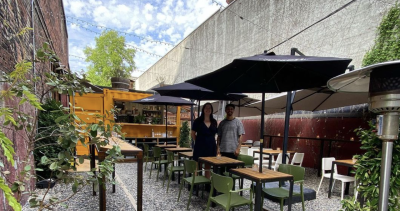Climate feedback loops could put human civilization on the road to extinction
A summer heat wave over Greenland has contributed to some shocking developments.
Between July 30 and August 5, surface temperatures rose 12° C above the period from 1981 to 2010, according to the National Snow & Ice Data Center.
A country that most people think is covered in ice has experienced more forest fires this year than in the past decade.
Greenland also registered daily ice melts of 12 to 24 billion tons over the five-day period—and daily runoff of 10 to 12 billion tons.
The public (apart from delusional deniers) tends to think of climate change as a steady upward increase in average global temperatures that will have greater consequences on future generations.
The planet has an average temperature of about 1° C above the period just before the Industrial Revolution. It has risen about 0.17 ° C per decade since 1970.
But cascading dominos of feedback loops could sharply raise the likelihood that children born today will experience horrific effects under "Hothouse Earth" conditions.
This term is being increasingly used following study published last year in the Proceedings of the National Academy of Sciences.
"It looked at 10 different feedback loops: permafrost thaw, loss of methane hydrates from the ocean floor, weakening land and ocean carbon sinks, bacterial respiration in the oceans, Amazon die back, boreal forests die back, reduction of northern hemisphere snow cover and in other places," Gail Bradbrook, cofounder of the Extinction Rebellion social movement, said in one of the group's videos. "And looking at all these different feedback loops suggests that the Earth can tip from just 2° C, which is what the Paris climate agreement moves around.
"At 2° C, it could tip into this Hothouse Earth state and stay there," she continued. "So as many scientists have said, 2° C is not a good move. It needs to be 1.5—and that was never a great move either."
The melting of Arctic ice is just one example of these feedback loops.
Called the Albedo effect, the heat is absorbed by the darker ocean rather than being reflected back into the atmosphere by the white ice. That, in turn, leads to more ice melting and more heat being absorbed, and so on.
"So that leads the Yale Climate Connections folks to say climate change is not simply a matter of cause and effect," explained Bradbrook, who has a PhD in molecular biophysics. "It's more like a vicious circle."
That, in turn elevates the risk of "abrupt climate change" or "nonlinear climate change", which poses a threat to the existence of the human species on Earth.
Recent research published in the journal Nature has indicated that oceans are retaining much more carbon dioxide than scientists believed in the past.
This means that if the oceans warm to a certain point, they will likely release more carbon dioxide into the atmosphere than was expected before.
https://twitter.com/NatureNews/status/1058043334512558080?ref_src=twsrc%...
This research was published in the same week that a study appeared in Science Advances showing that more extreme summer weather could be coming to the Northern Hemisphere.
Penn State climate scientist Michael Mann and Potsdam Institute for Climate Research scientist Stefan Rahmstorf came to this conclusion after researching the impact of aerosols and emissions on the jet stream.
More recently, on August 8, the Intergovernmental Panel on Climate Change released a report on land and food production.
Desertification and changing precipitation patterns are already contributing to large-scale migrations from Africa and Bangladesh.
“Food security will be increasingly affected by future climate change through yield declines—especially in the tropics—increased prices, reduced nutrient quality, and supply chain disruptions,” IPCC Working Group III cochair Priyadarshi Shukla said.
When it comes to food production, climate feedback loops should frighten the daylights out of anyone concerned about children and teenagers living today.
"Around 3° C, the Amazon starts to burn down," Bradbrook noted in the Extinction Rebellion video. "Forests become net carbon producers, not the sinks that they are today. And crops fail.
"We already will have failure of crops this year but you'll get massive crop failure when you get rapid desertification and flooding," she continued. "And look at history books about what happens to societies when food fails and you get food price spikes."
To force greater reductions in greenhouse gas emissions and move us away from a path toward human extinction, Bradbrook is recommending civil disobedience along the lines of what occurred in the U.S. civil-rights movement or in Mahatma Gandhi's anticolonial protests in India.
That's because she believes that disruptive nonviolent protests in large cities is the most effective way to bring about societal change.
"The absolute key issue is: how do you create enough political pressure? It's up to us to create that political will and there are tried and tested techniques for doing that," Bradbrook said. "So we're talking about the need for civil disobedience that escalates into a rebellion and uprising."















Comments